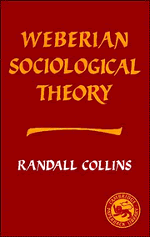Book contents
4 - A theory of technology
Published online by Cambridge University Press: 01 June 2011
Summary
Technology is one of the unexplored dark spots in the social sciences. It is true that there is a branch of economics that models the profitability and costs of technology in the abstract, in relation to growth, interindustry productivity, and rates of diffusion. The evolution of particular technologies and the behavior of particular firms have also been studied. But this research lacks explanatory leverage, since it assumes the prior existence of the entire social and economic complex that makes up an ongoing market economy. We lack, in short, the kind of historical comparisons that can do for technology what Weber provides for the other institutional features of modern capitalism. Technology plays a crucial role throughout history, but we cannot be sure that its dynamics are similar in different historical epochs. Only a comparative historical analysis can provide this.
Weber provides some useful leads, although he does not pay a great deal of systematic attention to technology. The very omission is indicative of his attitude. Regarding the organization of the modern factory, for example, Weber (1923/1961) comments that its major prerequisite is a mass demand for its products – else mass-production machinery is of little use – and moreover a relatively constant demand. It requires a “certain organization of the market” (1923/1961:129). A further prerequisite is relatively inexpensive techniques of production.
- Type
- Chapter
- Information
- Weberian Sociological Theory , pp. 77 - 116Publisher: Cambridge University PressPrint publication year: 1986



